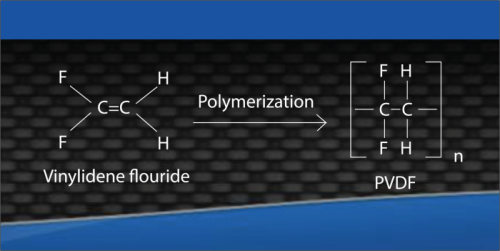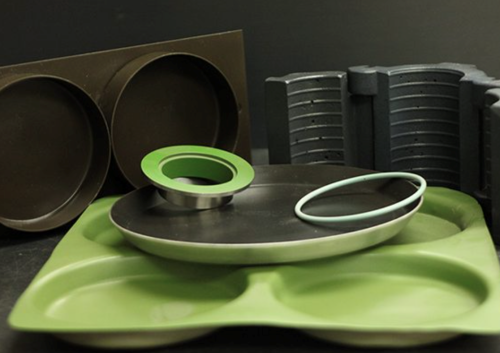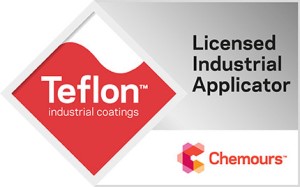7 Steps to Faster Fluoropolymer Product Selection
Answering seven simple questions will take you down the right path.
The dozens of fluoropolymer options on the market can present a maze of performance, application, and thickness properties to decipher. The unschooled don’t know where to start, yet fluoropolymer functional coating experts have years of accumulated knowledge that let them know intuitively where to start.

More often than not, fluoropolymer product selection is a true “process of elimination.” Each answer you have to the seven questions below can rule out classes or categories of fluoropolymers for your application. And, maybe more importantly, you have to prioritize the performance characteristics you’re looking for. Many make the mistake of looking for a “Goldilocks” coating that will perform highly in a number of ways. This is almost always impractical, even when comparing all the products in the main three classes we carry: Teflon™ coatings, Xylan® products, and PFA products.

1. Function: What do you want it to do?
Most of the time, there is one primary function that a customer is looking for a fluoropolymer to perform. The most common examples are non-stick, low coefficient of friction, corrosion resistance, abrasion resistance, and chemical resistance. Other functional considerations involve the end-use of the product being coated. For instance, will it be able to pass FDA regulations for food, consistency expectations for medical devices, or legal regulations for degradation?
2. Environment: What is harsh about the environment where it will perform?
Fluoropolymers are used in wide-ranging applications that can be extremely sterile (clean rooms) or extremely harsh (oil rigs). The environment of an oil rig contains relatively obvious challenges—salt-water corrosion, chemical exposure, high pressures, abrasive compounds, or wide temperature swings. But even in a clean room, temperature can be a very important factor. High temperature coating considerations can eliminate many classes of fluoropolymer because each formula has its own melting point and temperature range specification. And there are natural tradeoffs. A coating that is less tolerant to high temperature, for instance, will likely not be as durable.
3. Geometry: Does the part have an unusual shape or sharp internal corners?
The chemistry of fluoropolymers varies by product, formula, and primer coats used. One of the most important variations is the range of film thickness within which the film will perform optimally. If this thickness is incompatible with a curve, bend, or groove in your part, you’ll have to consider other options. Also, if a part has thin sections or is made of aluminum, you have to consider whether it might warp at a high curing temperature, which might eliminate some coating options.
4. History: What have you tried before that worked or didn’t work for you?
Maybe you’ve been applying a fluoropolymer coating for an industrial part, but the customer was expecting it to last longer before requiring a new coat. The durability of a coating depends on a number of factors such as the chemical properties of the formula itself, the substrate it is on, the film thickness, and the usage environment. The tradeoff might be that you can max out coefficient of friction but only in low-usage or light-weight situations.
5. Value: How will the coating deliver value to the end user beyond function?
There are often value trade-offs when selecting the best fluoropolymer for your application. For instance, thicker coats require more coating material, but the durability will increase. There are often unmeasured value sources that come by choosing the right coating, planning projects better, and considering the long-term costs of reapplications. For instance, a coating might be good for a more efficient application method that produces less waste, returns fewer rework jobs, and lasts longer in the field.
6. Manufacturer: Are there secondary performance or appearance considerations?
There are slight variations in performance characteristics of, for instance, Teflon™ coatings and Xylan® products. And, as always, there are tradeoffs on secondary performance properties. Occasionally, you might have a color option, but it’s important to remember that fluoropolymers are not cosmetic or decorative coatings—they are functional coatings.
 |
 |
7. Cost: Have you considered the cost factors associated with each option?
Be careful not to compare apples to oranges. A coating that appears to have similar qualities and a similar price might cost you a lot more after considering total costs. For instance, a competitively priced option might require a thicker film application and cover only half the square foot area. The total cost is then much higher for that option. Other factors that add to costs are:
- Transfer efficiency
- Part cleaning
- Masking
- Oven time and energy
- Part geometry
- Special requirements
- Inventory
- Rejects/reworks
- Rush deliveries
- Staff overtime
Ask an Expert for Advice
What can save the most time in polymer product selection is talking directly with an expert. Because there are so many factors to consider, wide polymer experience is invaluable. We have many experts here at Crest Coating, who have decades of experience, and we pull knowledge from many different areas. Fill out this quick form today and we can help select the right product for your job.